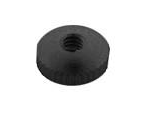
Drop one of these. (approx 1/4″ diameter)
Sweep up carefully…
While listening to this…
{ Yes, I found it. Note euphoria 4:49 – 5:07. }
Chocolate powered woodworking

Drop one of these. (approx 1/4″ diameter)
Sweep up carefully…
While listening to this…
{ Yes, I found it. Note euphoria 4:49 – 5:07. }
Gratitude – patience is a virtue
“Assumptions are dangerous.” “Times change.” Both are favorite sayings of a professor I once knew.
I just assumed the great glass shop down the road would still be there waiting to make glass for me. I printed out my plans and drove down. The shop was closed, and by the looks of the peeling paint had been for awhile. Best I can surmise, the owner retired. So… I drove around to a few other shops I knew of around here; closed, closed, closed.
The glass I want is custom cut, circular at the top, rounded bottom corners, and the piece for the door has beveled edges. See that nice 1 inch bevel? The store I used to frequent could do almost anything, and I assumed (there’s that word again) that other glass shops could also do the same sorts of work.
Like so many other businesses, the local shops are disappearing. OK, online it is. After all, I’m a web geek! Oughta be able to find what I want. Bzzzzzzzzzzt! Dozens and dozens of searches for custom cut glass, for beveled glass, for “glass & mirror” (not auto glass) resulted in 8 places that seemed feasible. The one with the most advertising money [their ads started immediately appearing on almost all web pages] had a simple 3 word answer “can’t do it.” Three others didn’t answer at all. The rest said things like:
Then it hit me. Go back to that clock collector forum I followed years ago. There I discovered that there are two makers of custom clock glass still working. Bingo! Ahem, don’t get too excited yet. One of those guys doesn’t answer and the other has moved.
I did manage to connect with one of them. He can make exactly what I want. BTW, he does all beveling by hand, and lo and behold, a beveling machine is just a big belt sander used by a skilled craftsman. I placed an order, and he responded with “Hope you don’t need it before Christmas.” He has a 2-3 month backlog.
… to be continued.
Gratitude – Patrick Leach: tool seller
In the previous post, I teased about glass as the next topic. Not ready to write about that ongoing saga yet.
The case work on this clock is made of joined panels. Each panel, two sides and the front door, consists of three pieces. The drawings show tongue and groove joins, something I have not yet tried.
BTW, the drawings show offset, non-symmetrical, tongue and groove joinery created by some sort of “router bit” thingy. I’ll be using traditional T&G / match planes.
New-old T&G planes … After missing out on a pair that Patrick offered in a recent newsletter, he came across another pair some days later and let me know. In addition to “curating” good tools, this is something I really like about Patrick. He remembers and eventually comes back with good stuff. These 3/4″ match planes are by the well known Bensen & Crannell. They appear to have been in recent use and arrived rust free and relatively sharp. Instead of a full restoration all I did was lightly hone them sharper. They have steel fence plates, clearly made for long life and heavy use. I suspect this pair has seen a lot of use.
BTW, Bensen & Crannell made planes in Albany, NY, 1844-1862. They were such prolific plane makers that if you search for them on the internet today, you’ll find hundreds upon hundreds of their tools still in existence and for sale.
The grooving iron is slightly narrower than the slot in the tongue iron, leaving a fit that is a wee bit too tight. The grooving iron is very substantial, tapered, and is actually keyed to the skate. I suspect that long ago, it might have been a bit wider but has been narrowed by sharpening.
My first trials resulted in both planes cutting well, but ended up leaving an an offset of about 1/32 inch at the joint line. …after hammering the pieces together. It’s not hard to plane the joint flush afterward, but being flush straight from the match planes would be better. I like “perfect.” This offset resulted from the tongue being a tad too far from the fence. On closer inspection, I see that the iron for the tongue plane was a replacement, not carrying the original Bensen & Crannell marking. So, make it work. Fettling was a matter of filing some material from the fence edge of the iron. A bit of filing and trial fitting got it to “perfect” which in this case is plus or minus the thickness of a piece of paper. The tight fit is easily remedied with one light pass of a rabbet plane along one side of a planed tongue.
Update – January 2018:
I noted above that the plans wanted an offset T&G, and that I was ignoring the plan and using the new/old T&G planes with the centered tongue. That worked just fine for the side frames, but not so well for the door frame. The centered groove didn’t work out so well making the transition from straight stiles to curved top. An unwanted gap appeared. So, I reverted to using a #44 plough plane to make the door frame joints as defined on the plan.